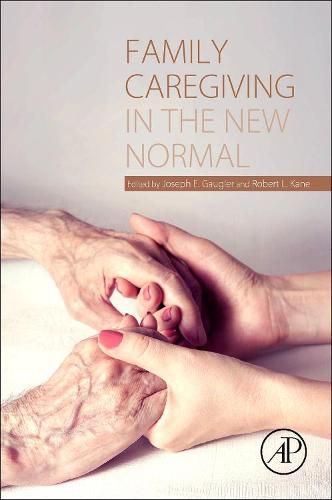Readings Newsletter
Become a Readings Member to make your shopping experience even easier.
Sign in or sign up for free!
You’re not far away from qualifying for FREE standard shipping within Australia
You’ve qualified for FREE standard shipping within Australia
The cart is loading…






Family Caregiving in the New Normal discusses how the drastic economic changes that have occurred over the past few years have precipitated a new conversation on how family care for older adults will evolve in the future.
This text summarizes the challenges and potential solutions scientists, policy makers, and clinical providers must address as they grapple with these changes, with a primary focus given to the elements that may impact how family caregiving is organized and addressed in subsequent decades, including sociodemographic trends like divorce, increased participation of women in the workforce, geographic mobility, fewer children in post-baby boom families, chronic illness trends, economic stressors, and the current policy environment.
A section on the support of caregivers includes technology-based solutions that examine existing models, personal health records, and mobile applications, big data issues, decision-making support, person-centered approaches, crowd-sourced caregiving such as blogs and personal websites that have galvanized caregivers, and new methods to combine paid and unpaid forms of care.
$9.00 standard shipping within Australia
FREE standard shipping within Australia for orders over $100.00
Express & International shipping calculated at checkout
Family Caregiving in the New Normal discusses how the drastic economic changes that have occurred over the past few years have precipitated a new conversation on how family care for older adults will evolve in the future.
This text summarizes the challenges and potential solutions scientists, policy makers, and clinical providers must address as they grapple with these changes, with a primary focus given to the elements that may impact how family caregiving is organized and addressed in subsequent decades, including sociodemographic trends like divorce, increased participation of women in the workforce, geographic mobility, fewer children in post-baby boom families, chronic illness trends, economic stressors, and the current policy environment.
A section on the support of caregivers includes technology-based solutions that examine existing models, personal health records, and mobile applications, big data issues, decision-making support, person-centered approaches, crowd-sourced caregiving such as blogs and personal websites that have galvanized caregivers, and new methods to combine paid and unpaid forms of care.